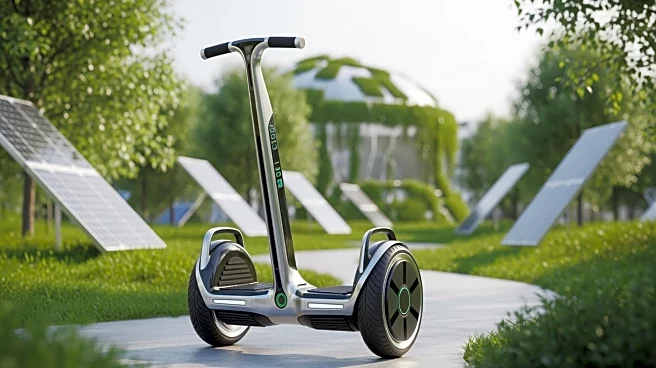What's Happening?
The self-balancing scooter market is experiencing significant growth, projected to reach USD 12.2 billion by 2035, up from USD 2.5 billion in 2025. This growth is driven by the increasing adoption of personal electric mobility solutions, particularly
among urban commuters and younger demographics. Self-balancing scooters, also known as hoverboards, are gaining popularity due to their convenience, style, and eco-friendly technology. These scooters are now widely used for urban commuting, campus transportation, tourism, and last-mile connectivity. Technological advancements, such as improved battery and motor efficiency, are enhancing their performance, making them a preferred choice for short-distance travel.
Why It's Important?
The expansion of the self-balancing scooter market reflects a broader shift towards sustainable urban mobility solutions. As concerns over air pollution and urban congestion grow, consumers are increasingly seeking zero-emission transportation options. The popularity of these scooters among youth and millennials highlights a cultural shift towards tech-savvy and portable vehicles. This trend is significant for urban planning and environmental policy, as it supports efforts to reduce traffic congestion and carbon emissions. The market's growth also presents opportunities for manufacturers to innovate in safety and connectivity features, potentially influencing regulatory standards and consumer expectations.
What's Next?
As the market continues to grow, manufacturers are likely to focus on enhancing safety features and regulatory compliance to address concerns over battery safety and balance control. The integration of smart connectivity and IoT features is expected to become more prevalent, offering users enhanced monitoring capabilities. Additionally, the development of foldable and lightweight designs will cater to urban commuters seeking portability. The market's expansion in regions like North America, Europe, and Asia-Pacific will be driven by factors such as smart city initiatives, green mobility policies, and large-scale manufacturing capabilities.
Beyond the Headlines
The rise of self-balancing scooters could have long-term implications for urban infrastructure and public transportation systems. As these scooters become more integrated into daily commuting, cities may need to adapt their infrastructure to accommodate this mode of transport, potentially leading to the development of dedicated lanes or parking areas. Furthermore, the emphasis on eco-friendly transportation solutions aligns with global efforts to combat climate change, highlighting the role of personal mobility devices in achieving sustainability goals.













